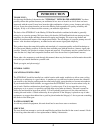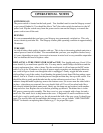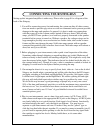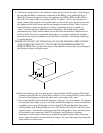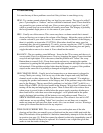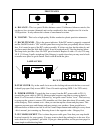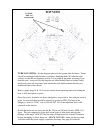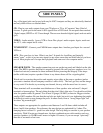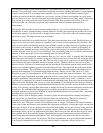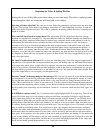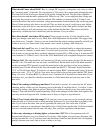
OPERATIONAL NOTES
SWITCHING ON
The power switch is located on the back panel. You shouldn't need to turn the Stingray around
or get yourself behind it. You should be able to "feel" the rocker switch located next to the AC
power cord. Flip the switch away from the power cord to turn on the Stingray or towards the
power cord to turn off the unit.
RUNNING
It is not recommended that you leave your Stingray stay permanently switched on. This only
wastes electricity and tube life. The Stingray reaches peak operating condition in approximately
30 minutes.
TUBE LIFE
As with all tubes, their quality degrades with age. This is due to decreasing cathode emission, a
natural process found in all tubes. We recommend that you have your amplifier checked every
4-5 years, depending on usage. An excessive increase in noise level or very unstable output tube
bias can indicate the need to replace a tube.
5
REPLACING A TUBE, INDICATOR LAMP or FUSE. You should read page 14 and 15 for
more details if you need more specific info. You may need a small Phillips screwdriver and the
correct replacement fuse, tube or lamp. First be sure the unit is off and remove the IEC mains
cable. Let it sit for 20 minutes to be sure all power supply capacitors are discharged otherwise
one could still get a shock even though the unit is unplugged. Gently wiggle the tube around
while pulling it out of the socket. Avoid bending the printed circuit board. Before putting a new
tube in, look at it. Check to see that the pins are straight and that they line up to the socket. You
should be able to gently push the tube into the socket without excessive force. If it is the
indicator lamp that needs replacing, remove the bottom cover. Six screws near the sides hold it
in place - when these are removed, the cover should slide off. You will see what looks like a
fuse directly behind the black name panel. Gently pry the lamp out and replace it with another
lamp and not a fuse. Replace the cover before powering up the unit. The mains fuse is in the
IEC power connector sub-assembly. The fuse cover is a grey rectangle with a large slot and a
small slot. The small slot is to help remove the cover. A fingernail or small screwdriver in the
small slot is used to gently push or pry the tab towards the bulk of the grey cover. It should pop
open. The two B+ fuses are located under the bottom cover; see pg 8 under "ONE CHANNEL
DEAD" for details on replacing these. Refer to pg 17 for proper fuse types.





